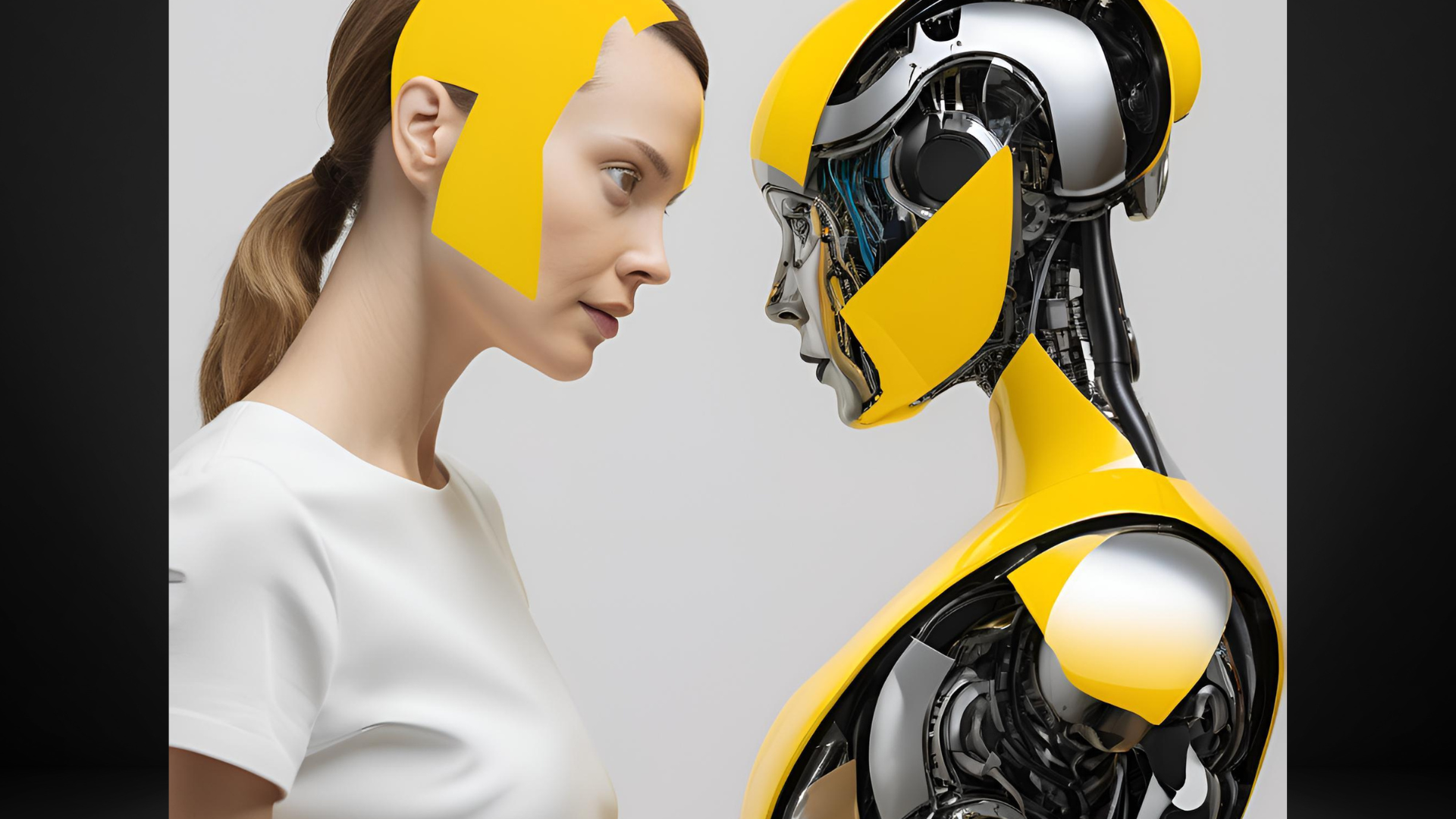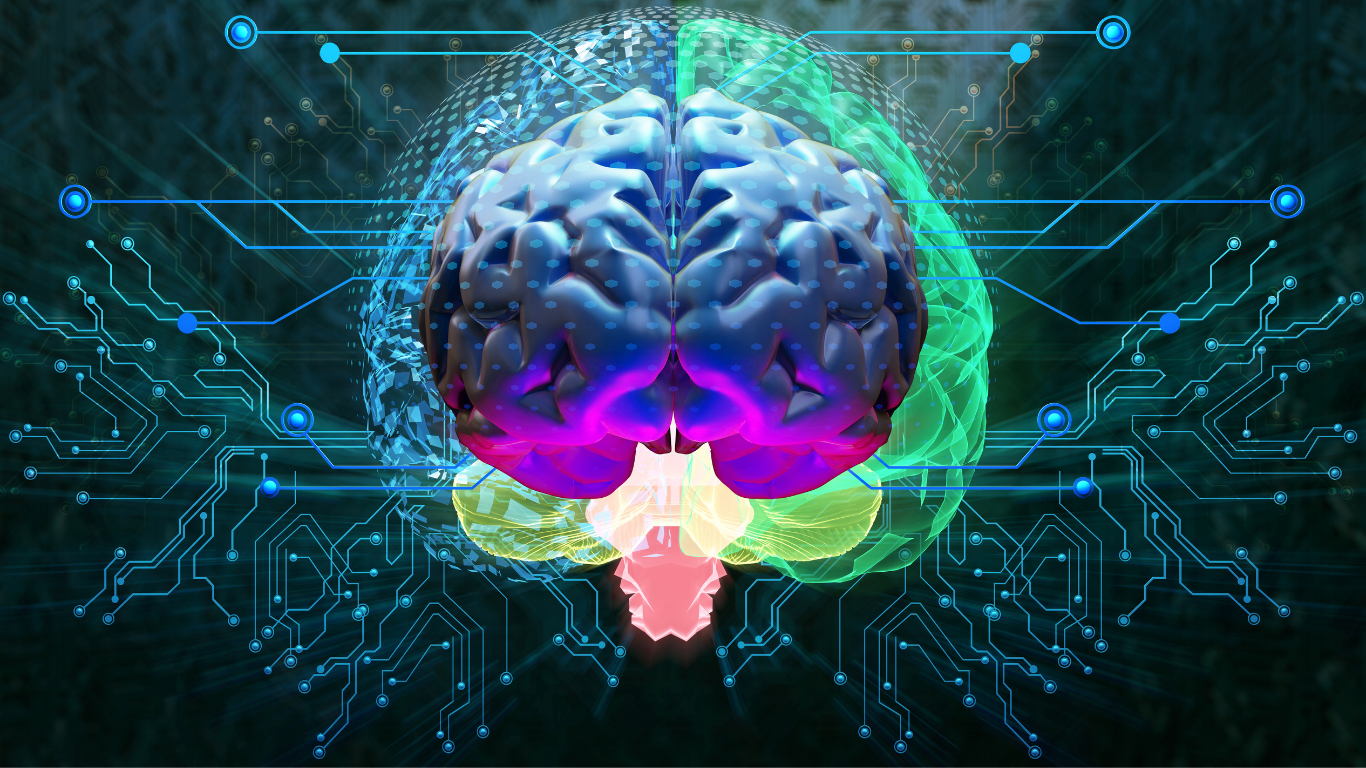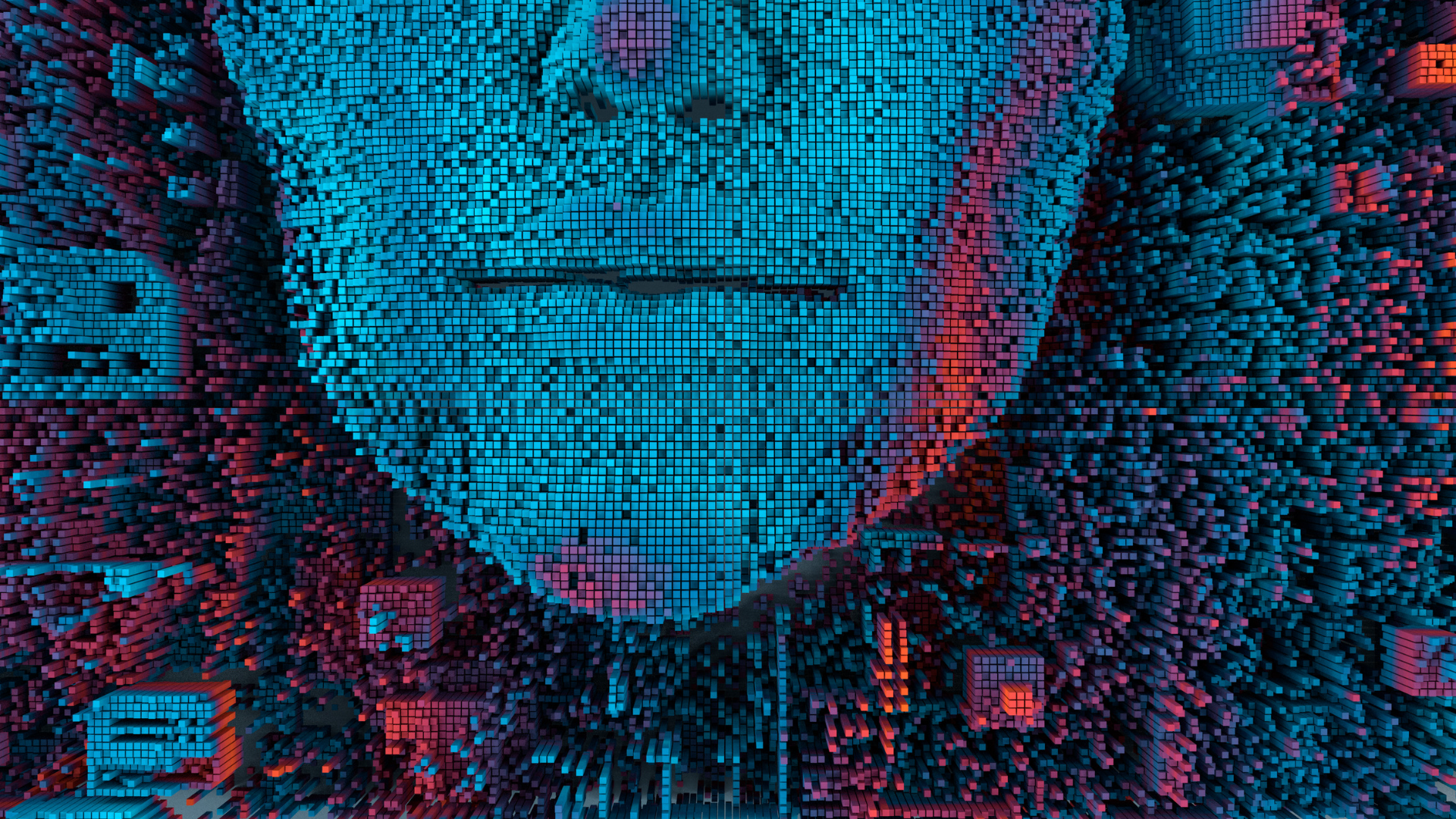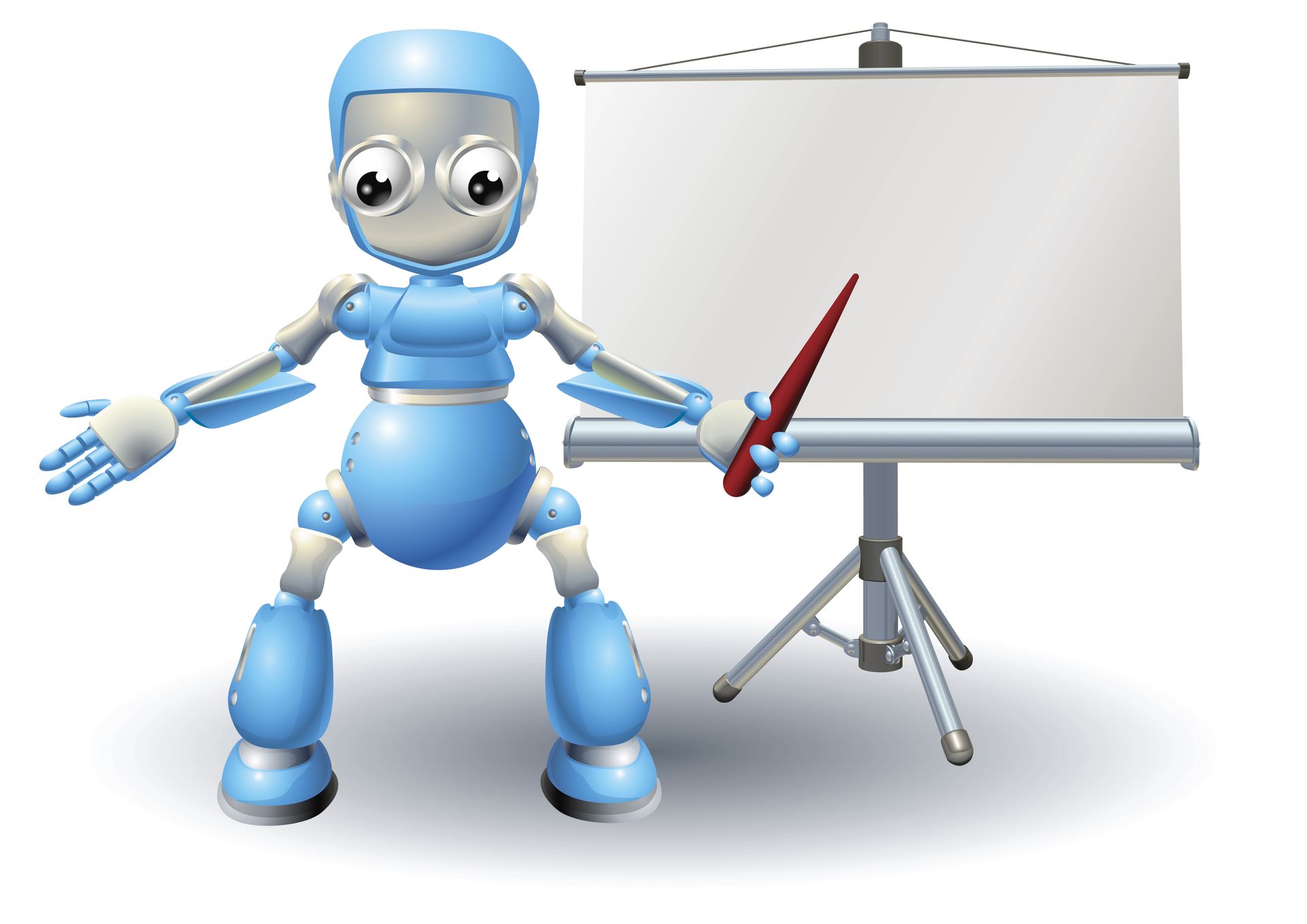Seeing Humans Through 5 I's
How Our Psychology Shapes Our Digital Experiences
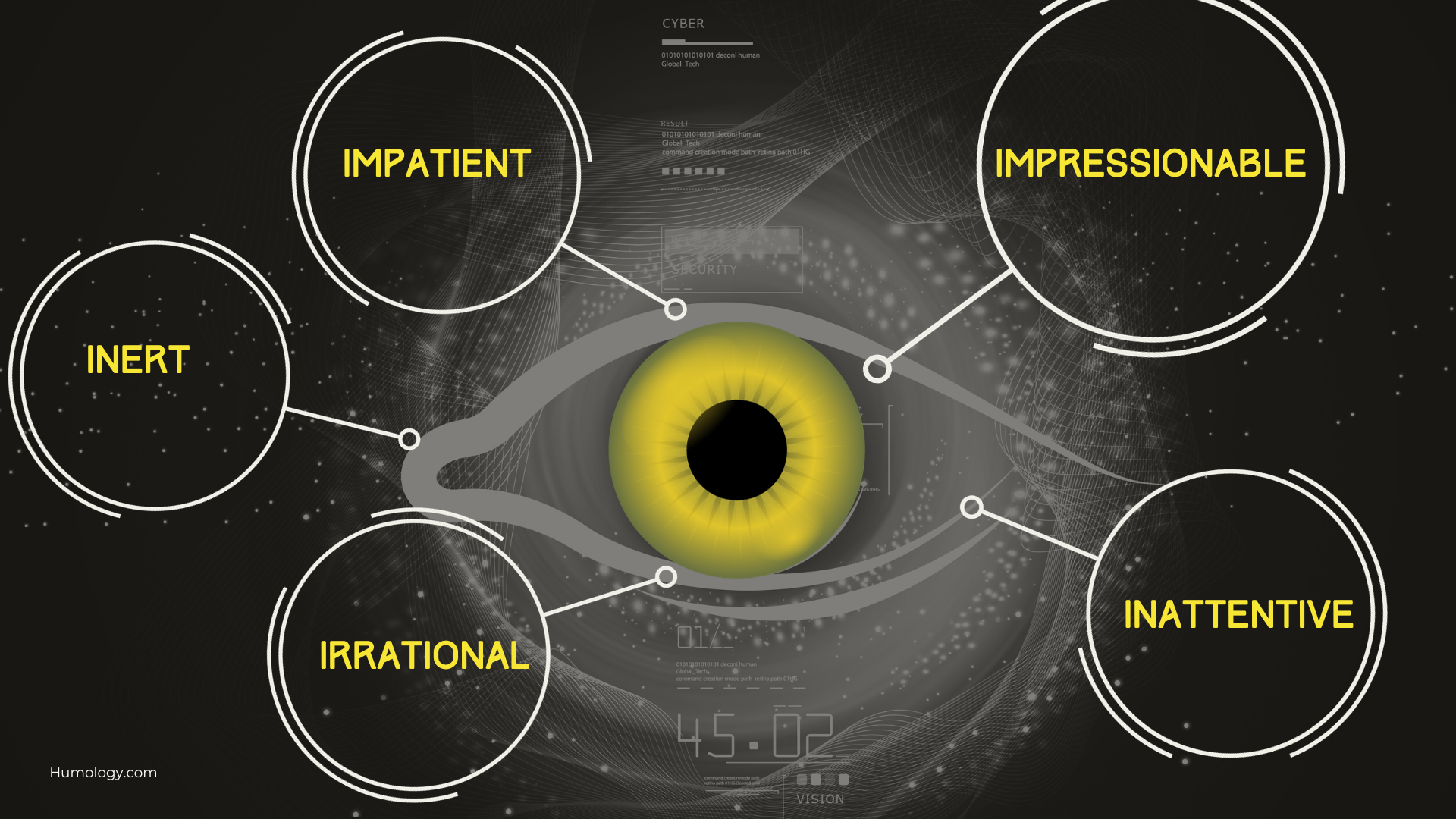
The symbiotic dance between humans and technology has delicately unfolded over millenia: an intricate choreography that reflects our relentess pursuit of progress, of innovation, and of connection. At times we take the lead, and sometimes we follow. And as this timeless dance continues, it weaves the threads of our shared story.
Against a backdrop of flickering firelight casting shadows on cave walls, we took our first steps to a rhythm set by the beat of stone tools. The dance quickened with the advent of the wheel and the plow, as we cultivated the land and built the foundations of civilization. We led, technology followed, and together we crafted the first chapters of human ingenuity.
With the advent of the Industrial Revolution, the dance floor expanded. Steam engines roared and factories buzzed, the tempo accelerated as our machine creations took on tasks once carried out by human hands. We adapted to the new rhythm as our partner became more agile and confident.
Entering the digital age, DJs and innovators, empowered by technology, were the new choreographers. The beat quickened, peppered with catchy hooks designed to grab our attention and induce a trance-like state. We took to the dance floors en masse, from New York to Ibiza, as technology created the ultimate dancefloor accommodating a melting pot of styles and personas. There is collective synchronicity as we respond to the call to dance harder, move faster, and lose ourselves in the moment.
Today, as we stand on the brink of an AI revolution, our dance partner is a formidable learner, with the potential to quickly adapt — and lead, if allowed. Yet, it remains our responsibility to choreograph this symbiotic partnership, designing a dance that is joyous and uplifting, where every step is in harmony with with humanity. Who, then, will ultimately take the lead role in this intricate dance as we enter the age of AI?
👀 Seeing Humans Through 5 I’s
The dance between humans and technology is not just about progress and innovation; it is about maintaining harmony, fostering connection, and crafting an enduring partnership that reflects the best of our humanity.
To truly understand our relationship with technology, we must look inward, to better understand ourselves. When we better understand ourselves — our desires, our vulnerabilities, our motivations — we can unlock profound insights into how we are shaping the world around us, and how we are adapting to the changes we have put in motion.
The 5 I’s framework provides an insightful overview of five fundamental aspects of human psychology. These underlying universal traits, deeply woven into our psyche, include Impatience, Inattention, Impressionability, Irrationality, and Inertia. They act as invisible forces shaping our choices, our behaviors, and our evolving dance with technology.
👁️ Impatience
We live in a culture of Now. Got a question? Google, Siri or Alexa have you covered. Feeling bored? Netflix, Disney, and Apple offer endless entertainment options. Need to boost your productivity? ChatGPT is at-the-ready to triple your output. This central human desire for instant gratification increasingly dictates the rhythm of our digital world.
Each and every one of us is hard-wired for instant rewards. We prefer smaller rewards sooner over larger rewards in the future. (In fact, we are at the peak of our impatience during our teenage years in response to a surge in testosterone). In a world designed for convenience, temptations abound. It’s becoming more and more challenging to prioritize our future selves over today’s cravings and desires. Our overarching desire to satisfy our cravings today sets up a battle between our Willpower - tasked with delayed gratification, and our Dopamine pleasure centre that lights up at the mere anticipation of our desires being met.
When technology is designed to egg on our natural impatience, our willpower is easily drowned out. Take Netflix’s auto-play feature, for instance — it quietly shifts the decision-making effort from ‘Should I watch another episode?’ to ‘Should I stop watching?’ Social Media’s infinite scroll works on the same principle —intentionally designed to override our willpower by making is harder to know when enough is enough.
The result is myopic overconsumption. We see it in the food industry — where convenience food has given way to fast food, now available at the click of a button. We see it in the clothing industry, where disposable fashion trends change at the speed of an Instagram post. Yet perhaps, the most worrying manifestation is in the overconsumption of information — every day, we ingest billions of empty-calorie data snacks in the forms of headlines, tweets and photos. The combination of too much information (TMI) and a fear of missing out (FOMO) is the perfect recipe for ‘infobesity’ — a condition where our minds are overfed with low-nutrient content, leaving us craving substance and depth in a world awash with superficial information
👁️ Inattention
While we grapple with Impatience, we also find ourselves contending with another formidable “I” — Inattention. In a world where our craving for a quick dopamine hit knows no bounds, our ability to maintain focus and sustained attention is increasingly challenged by the digital experiences we have created.
A human brain processes billions of data points every second, making lightning fast decisions about what is important and filtering out unnecessary noise. Picture this system as a searchlight, scanning our environment for relevant inputs that demand our attention. Once it pinpoints what matters, it seamlessly transitions from searchlight to spotlight mode, effectively silencing the background noise and honing in with laser-like precision on the object of our attention — a phenomenon known as selective attention.
Alongside the evolution of technology, we are dealing with an increasing amount of inputs we need to filter through every day. In a single day, we send 333Bn emails, 867M Tweets, and 23Bn text messages. We post 1Bn updates on Facebook and a further 100M on Instagram. We consume 5Bn videos on YouTube and a further 1M on TikTok. Yet, there are still only 24 hours in a day, and our brain capacity is largely static — so how are we managing this extra noise?
Think of our brains like a sponge — when we drip water into a sponge,it absorbs every drop staying intact. However, if we aim a fire hose at that same sponge, it is easily overwhelmed. It’s retention capacity is compromised and it begins to leak. The same thing is happening to the human brain every day.
Our devices constantly beckon us with notifications, each one demanding their share of our precious attention. Our attention, once a focused spotlight, acts more like a scattergun, desperately trying to find focus in a landscape overflowing with information. This fragmentation of focus not only hampers our ability to engage deeply with content but also challenges our capacity to cultivate patience and nurture the invaluable skill of sustained attention.
👁️ Impressionability
While we might like to think that we are in control of our thoughts and behaviours, psychology (and increasingly technology), tells a different story. Think about how you decide what to watch on TV, where to go on holiday, or what restaurant to book. Many of us are increasingly outsourcing our decision-making to algorithms — think Netflix, Tripadvisor and OpenTable. Curation is a necessary evil in an increasingly noisy world, but it may surprise you just how easily influenced we are by the algorithms designed to help us make decisions.
Social proof is a powerful driver of human behavior. Like ‘sheeple’, we blindly follow the actions and opinions of others, especially in uncertain situations. When we see a product with a large number of positive reviews or a social media post with thousands of likes, we are more likely to perceive it as valuable and credible. Similarly, we are inclined to trust and follow the guidance of perceived authorities, whether they are experts, influencers, or even algorithms that suggest what we should watch or buy. Emotional contagion, where we ‘catch’ and spread emotions to those around us operates just as strongly in the digital world as it does in person. Emotionally charged content, whether joyous, angry or sad, are contagious and spread quickly through networks, shaping our own perceptions and behaviours.
Consider the rise of social media influencers. Today’s influencers wield significant power over their followers, leveraging the butterfly effect to shape global trends and consumer behavior. When an influencer endorses a product, their followers, driven by social proof and trust in the influencer’s authority, are more likely to purchase that product. While technology’s ability to influence can be benign, it also has a darker side. Misinformation and fake news exploit our tendency to believe authoritative-looking content, spreading false information rapidly. Deepfakes and other advanced technologies further blur the line between reality and fiction, making it increasingly difficult for us to discern truth from manipulation.
As we navigate the digital dance, we can better guard ourselves against undue influence and manipulation by practicing critical-thinking skills. Simply documenting your thoughts and conclusions can bring awareness to how in control you are of your everyday decisions. Similarly, engaging in constructive debate and discussion can build awareness of,and appreciation for, alternative perspectives.
Left unchecked, what happens when we design technologies to exploit the trifecta of impatience, inattention and impressionability? Essentially, we get I ³— a compunding surge in impulsive behaviours. We hunt for digital snacks all day long, consuming empty calories but never feeling fully satiated. We infer understanding and meaning to news headlines and get swept up in the latest trends. The result is myopic overconsumption.
👁️ Irrationality
Economic theory is based on the concept of ‘homo economicus’ — a figurative human being with infinite capacity to make rational decisions. Homo economicus would consider all the permutations and combinations, and weigh up all the pros and cons, before making a cup of tea each morning. However, rationality takes significant cognitive effort — and humans are hard-wired for cognitive efficiency! While we like to think of ourselves as intellectual animals, we are far more instinctive and emotional than we’d like to admit.
Scientists estimate that we spend over 90% of our day operating in our Default Mode Network — colloquially known as being on ‘auto-pilot’. When we’re on auto-pilot, we use our habits to perform routine tasks, and our biases to jump to quick conclusions. While we’re in this zone of automaticity, we are extremely vulnerable to external influences. Research also shows that we are guided by a common set of principles and behaviours that appears to be pretty predictable. These patterns are so predictable that we consider them to be systematic — that is, we repeat them over and again. Magicians, mind readers, advertisers, and increasingly algorithms, are skilled at decoding these predictable patterns much better than we can ourselves.
Consider the wildly lucrative industry of behavioral targeting in digital advertising. Algorithms analyze user behavior, preferences, and demographics to deliver personalized ads. By exploiting predictable cognitive biases and emotional triggers, advertisers can significantly impact consumer behavior, prompting purchases based on irrational impulses rather than rational evaluation. Who is really making the decisions we take every day?
👁️ Inertia
Inertia is, for me, the most confounding of the 5 I’s — it’s like having one foot on the accelerator, and the other on the brake — you’re going nowhere fast! It’s like running to stand still — it’s exhausting, and that lack of progress is frustrating. In everything we do, there are rival forces at play — forces that drive us forward (our intentions), and forces that pull us back (the memory foam of our comfort zone). To create momentum, we need to add more weight to the accelerating forces, and ease off on the forces resisting the change.
With an understanding of how important habits are to our brains, we can appreciate why we find our comfort zone so attractive. We have invested significant time and resources in cultivating a range of habits that help us feel productive and get stuff done effortlessly. Stepping outside our comfort zone feels uncomfortable and everything feels effortful. Our brains naturally want to pull back from this zone of discomfort. This is how we put the brakes on, despite our best intentions.
Inertia is at play when we want to get physically fit, but we fail to follow through. Inertia is responsible when we want to learn something new, but it feels too hard so we give up. However, intertia also prevents us from making impulsive decisions at times — because if the required action feels hard or uncomfortable we won’t do it.
Technology designers have long-understood the psychology of inertia — offering incentives that help you press on the accelerator and reducing friction to ease off the brakes. For example, ApplePay removes any friction from digital payments — we no longer need to remember credit card numbers and passwords to purchase items online. Many SaaS products have a free tier that allows you to try before you buy — eliminating any discomfort you might feel when dipping a toe in new waters. Fitness apps offer rewards and badges to add momentum to your journey. By addressing barriers such as familiary, effort, and perceived risk, the design of technologies can help us build up momentum to achieve certain goals. The trick is to ensure the goals you are moving towards are your own!
